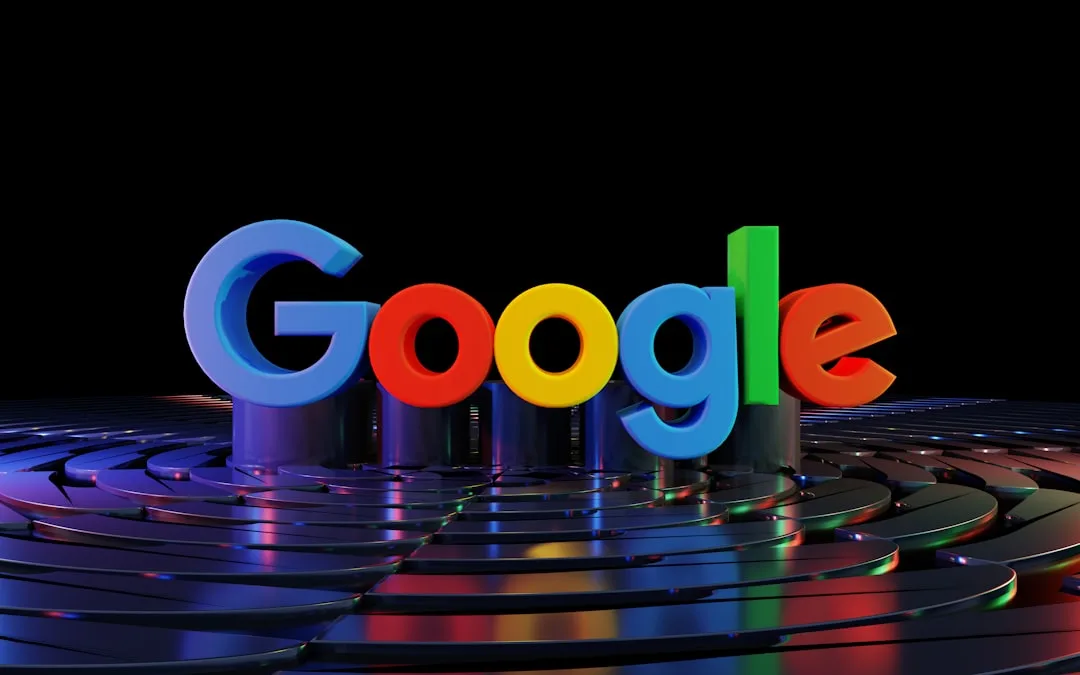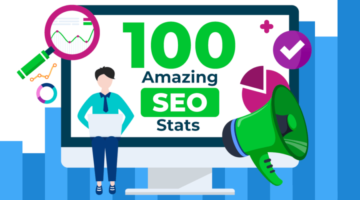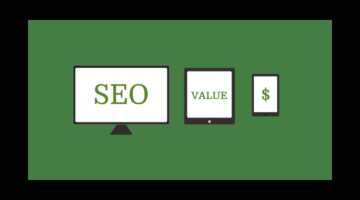The Ultimate Guide to PPC Management
The Ultimate Guide to PPC Management: Boosting Your Brand with Google Ads
In the ever-evolving landscape of digital marketing, standing out amidst the competition is not just a goal but a necessity. Pay-Per-Click (PPC) advertising, particularly through Google Ads, has become a powerful tool for businesses seeking to enhance their brand visibility and drive digital marketing growth. Since 2004, OHS Publishing has been at the forefront of this arena, offering expert PPC management and search engine marketing services that propel businesses forward. Whether you’re a small business owner or a marketing professional, understanding the intricacies of PPC can transform your approach to reaching new customers. Join us as we delve into the ultimate guide to harnessing the full potential of Google Ads, ensuring your brand not only competes but thrives.
Understanding PPC Management
PPC management is the cornerstone of effective digital advertising. Let’s explore the fundamentals, their importance in digital marketing growth, and the key players in the field.
Basics of Pay-Per-Click
Pay-Per-Click (PPC) is a digital advertising model where advertisers pay a fee each time their ad is clicked. It’s a way of buying visits to your site, rather than earning those visits organically.
PPC operates on a bidding system. Advertisers bid on keywords relevant to their target audience. When a user searches for those keywords, the ads with the highest bids and best quality scores appear at the top of search results.
The beauty of PPC lies in its measurability and control. You can track every aspect of your campaign, from clicks to conversions, allowing for data-driven optimization. This comprehensive guide provides in-depth insights into PPC basics and effective management strategies.
Importance of Digital Marketing Growth
PPC plays a crucial role in digital marketing growth, offering immediate visibility and targeted reach. Unlike organic methods that take time to yield results, PPC can drive traffic instantly.
For businesses looking to launch new products or enter new markets, PPC provides a quick way to test market response and gather data. It complements other marketing efforts, enhancing overall digital presence.
Moreover, PPC’s precise targeting capabilities allow businesses to reach specific demographics, locations, and even times of day. This level of control ensures marketing budgets are spent efficiently, maximizing return on investment.
Key Players: Google Ads
When it comes to PPC, Google Ads stands out as the dominant platform. With Google’s vast search network and partner sites, it offers unparalleled reach and visibility.
Google Ads provides a variety of ad formats, including text ads, display ads, video ads, and shopping ads. This versatility enables businesses to select the format that best suits their objectives and target audience.
The platform’s sophisticated algorithms and machine learning capabilities continually optimize ad performance, making it a powerful tool for businesses of all sizes. Understanding Google Ads is essential for any marketer looking to excel in PPC management.

Setting Up Your Google Ads Campaign
Creating a successful Google Ads campaign requires careful planning and execution. Let’s break down the key components of setting up an effective campaign.
Identifying Target Audience
Identifying your target audience is the foundation of any successful PPC campaign. It involves understanding who your ideal customers are, what they’re looking for, and how they behave online.
Start by creating detailed buyer personas. These should include demographic information, interests, pain points, and online behavior patterns. Use data from your existing customer base, market research, and competitor analysis to inform these personas.
Google Ads offers powerful targeting options to reach your ideal audience:
-
Demographics: Age, gender, parental status, etc.
-
Interests: Hobbies, passions, and lifestyle choices
-
In-market audiences: People actively researching products or services
-
Remarketing: Targeting users who have previously interacted with your website
Remember, the more precisely you can define your audience, the more effective your ads will be. Regularly refine your targeting based on campaign performance data.
Crafting Compelling Ad Copy
Your ad copy is your first impression on potential customers. It needs to be compelling, relevant, and aligned with user intent. Here are the key elements to consider:
-
Headline: Make it attention-grabbing and include your primary keyword.
-
Description: Highlight unique selling points and include a clear call-to-action.
-
Extensions: Use ad extensions to provide additional information and increase ad real estate.
When writing your ad copy:
-
Focus on benefits, not just features
-
Create a sense of urgency
-
Use numbers and statistics when relevant
-
Ensure your ad matches the landing page content
This guide offers additional insights on crafting compelling PPC ad copy.
Budgeting for Maximum Impact
Setting the proper budget for your PPC campaign is crucial for maximizing your return on investment ROI. Begin by determining your overall marketing budget and allocating a portion to PPC, based on your goals and industry benchmarks.
Consider these factors when budgeting:
-
Cost per click (CPC) for your target keywords
-
Estimated daily clicks based on your budget
-
Conversion rate and cost per acquisition goals
Google Ads offers tools to help you estimate traffic and costs based on your keywords and budget. Use these to set realistic expectations and allocate your budget effectively.
Remember, PPC budgets should be flexible. Start conservatively, monitor performance closely, and adjust based on results. Allocate more budget to high-performing campaigns and reduce spend on underperforming ones.
Optimizing Your PPC Strategy
Continuous optimization is key to PPC success. Let’s explore strategies to enhance your campaign performance and maximize your return on investment (ROI).
Utilizing Search Engine Marketing
Search Engine Marketing (SEM) encompasses both paid search advertising (PPC) and organic search optimization (SEO). While PPC offers immediate visibility, integrating it with SEO can lead to more sustainable, long-term results.
Key SEM strategies include:
-
Keyword research: Identify high-value keywords for both PPC and SEO efforts
-
Landing page optimization: Ensure landing pages are relevant and optimized for both users and search engines
-
Quality Score improvement: Enhance ad relevance and landing page experience to boost Quality Score and reduce CPC
By aligning your PPC and SEO efforts, you can create a comprehensive search strategy that captures both immediate and long-term traffic opportunities.
Analyzing Performance Metrics
Data analysis is crucial for optimizing PPC campaigns. Key metrics to monitor include:
|
Metric |
Description |
Target |
|---|---|---|
|
Click-Through Rate (CTR) |
Percentage of impressions that result in clicks |
Industry-dependent, typically 1-2% for search ads |
|
Conversion Rate |
Percentage of clicks that result in desired actions |
Varies by industry and goal |
|
Cost Per Conversion |
Total cost divided by the number of conversions |
It should be less than your profit margin |
|
Quality Score |
Google’s rating of ad quality and relevance |
Aim for 7+ out of 10 |
Regularly review these metrics to identify areas for improvement. Look for trends, analyze performance by device, location, and time of day, and use this data to inform your optimization efforts.

A/B Testing for Success
A/B testing, also known as split testing, is a powerful method for optimizing your PPC campaigns. It involves creating two versions of an ad element and comparing their performance to determine which is more effective.
Elements to test include:
-
Ad headlines and descriptions
-
Call-to-action phrases
-
Landing page designs
-
Ad extensions
When conducting A/B tests:
-
Test one element at a time for clear results
-
Run tests for a statistically significant period
-
Use a large enough sample size for reliable data
-
Implement winning variations and continue testing
This resource provides more detailed insights on A/B testing in Google Ads.
Overcoming PPC Challenges
While PPC can be highly effective, it also comes with its share of challenges. Let’s explore common obstacles and strategies to overcome them.
Managing Competition
In competitive industries, standing out in pay-per-click (PPC) advertising can be a significant challenge. Here are strategies to manage competition effectively:
-
Conduct a thorough competitor analysis to understand their strategies
-
Focus on long-tail keywords with less competition
-
Highlight unique selling points in your ad copy
-
Use ad extensions to increase ad real estate and visibility
-
Consider bidding on competitor brand names (if allowed in your region)
Remember, competing isn’t always about outbidding others. Focus on improving your Quality Score to potentially lower costs and improve ad position.
Avoiding Common Pitfalls
Many advertisers fall into common PPC traps. Here are some to watch out for:
-
Neglecting negative keywords: Failing to use negative keywords can waste budget on irrelevant clicks
-
Ignoring mobile optimization: With increasing mobile traffic, ensure your ads and landing pages are mobile-friendly
-
Broad match keyword overuse: While broad match can increase reach, it can also lead to irrelevant clicks
-
Inconsistent ad messaging: Ensure your ad copy aligns with your landing page content for better Quality Scores and conversion rates
Regular audits of your PPC account can help identify and correct these issues before they significantly impact performance.
Adapting to Market Changes
The digital advertising landscape is constantly evolving. Stay ahead by:
-
Keeping up with Google Ads updates and new features
-
Monitoring industry trends and adjusting strategies accordingly
-
Regularly reassessing your target audience and messaging
-
Being prepared to pivot quickly in response to market changes or crises
Flexibility and continuous learning are key to long-term PPC success. Consider working with a PPC management agency to stay current with industry best practices and emerging trends.
Measuring Success and ROI
Effective measurement is crucial for demonstrating the value of your PPC efforts and informing future strategies.
Tracking Conversions
Conversion tracking is essential for understanding the actual impact of your PPC campaigns. It involves measuring specific actions users take after clicking your ad, such as making a purchase, signing up, or downloading content.
To set up effective conversion tracking:
-
Define clear conversion goals aligned with business objectives
-
Implement tracking codes on your website or app
-
Set up conversion actions in Google Ads
-
Use cross-device conversion tracking to capture user journeys across multiple devices
Remember, not all conversions are equal. Assign values to different conversion types to better understand their impact on your bottom line.
Evaluating Campaign Effectiveness
To evaluate overall campaign effectiveness, look beyond simple metrics, such as clicks and impressions. Consider:
-
Return on Ad Spend (ROAS): Revenue generated divided by ad spend
-
Customer Lifetime Value (CLV): The total value a customer brings over their relationship with your business
-
Cost Per Acquisition (CPA): The cost to acquire a new customer through your PPC efforts
“The true measure of PPC success isn’t just in the clicks, but in the value those clicks bring to your business.” – Digital Marketing Expert.
Use these metrics to assess whether your PPC efforts are truly driving business growth and profitability.
Continuous Improvement Strategies
PPC management is an ongoing process of refinement and optimization. Implement these strategies for continuous improvement:
-
Regular performance reviews: Set a schedule for in-depth campaign analysis
-
Iterative testing: Continuously test new ad variations, landing pages, and targeting options
-
Budget reallocation: Shift budget from underperforming campaigns to high-performers
-
Seasonal adjustments: Adapt your strategy for seasonal trends and events
-
Automation: Leverage Google Ads automation features for more efficient management
Remember, the goal is not perfection, but consistent, data-driven improvement over time. Stay curious, be willing to experiment, and always keep your business objectives at the forefront of your PPC strategy.












